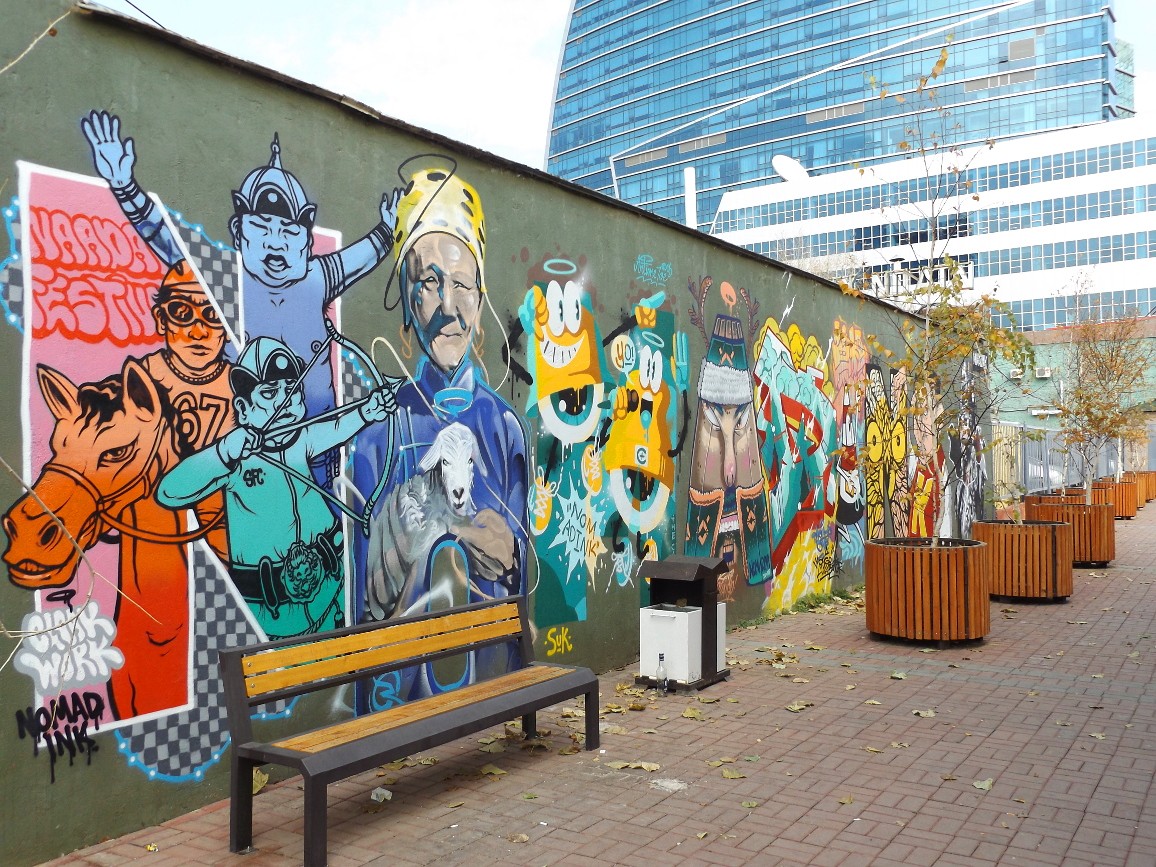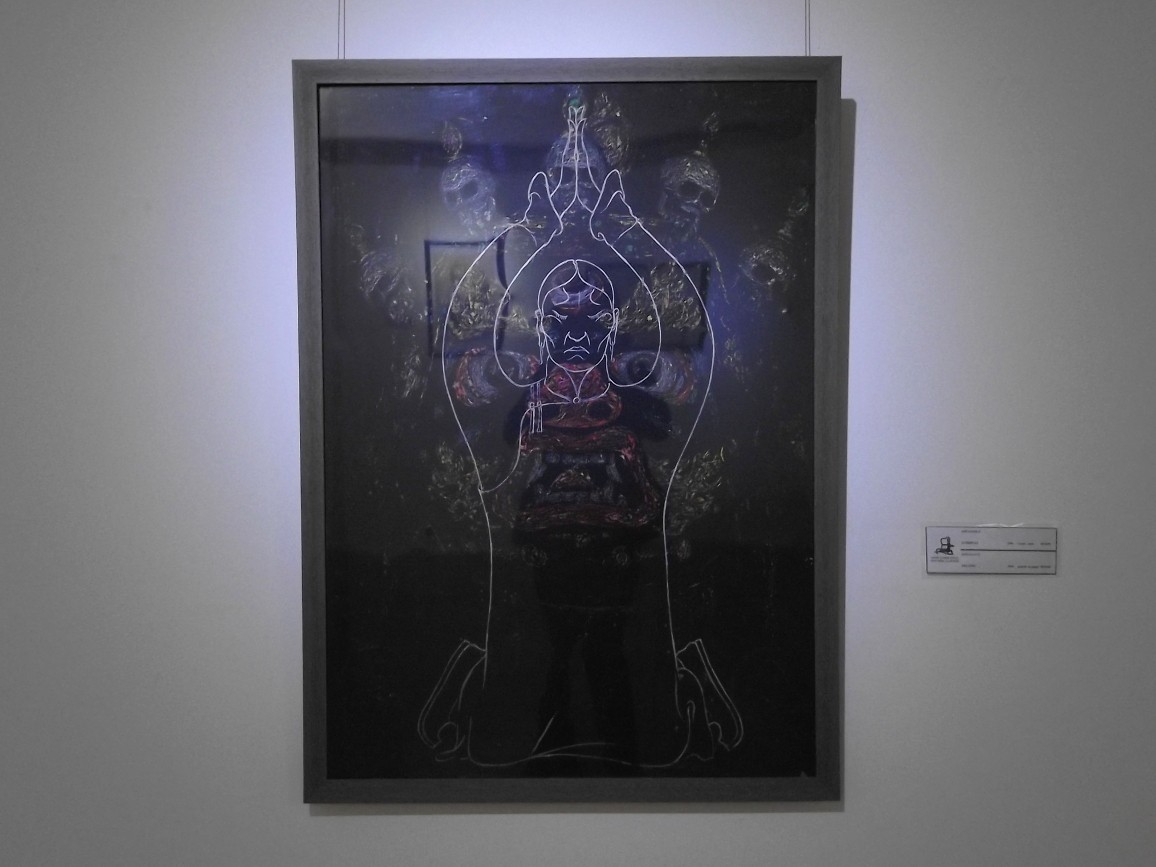
Modern Mongolia
What do most people know about Mongolia? This is a poor backward country. People live in yurts, ride horses and graze cattle. And nobody knows what is happening in the big world. Oh well.

The area of the country is simply amazing, although it is only a small part of their ethnic lands and only 4% of the area of the Mongol Empire. Most of this territory looks like a Martian desert, and only an asphalt road, small rivers in the valleys and rare roadside cafes remind you that you are still on Earth.
Ulaanbaatar
And then Mongolian reality sets in abruptly.

Today Mongolia is one of the fastest growing economies in the world, with a standard of living incomparably higher than the average for Russia. Most of the population lives in cities, and urbanization is getting higher and higher every year.

The “Soviet friendship” is over here long ago, now there is democracy and a full-fledged market economy, without bribes, kickbacks and government regulation, international quality standards and a confident desire to become a second Korea. And no, not North.

At the entrance to parliament sits like Darth Vader, a no less famous character named Genghis Khan, who at one time united all Mongolian tribes into a single Mongol Empire, which eventually subdued a third of all mankind.

The typical Soviet project “Theater of Russian Drama” stands alone among modern architecture.

The shape of the roof of one of the hotels looks like a slide, which would be fun to slide down. If you put a trampoline.

It is a rare case when in a gallery of modern art from the exhibits you can understand what country you are in. Horses are very popular here.

One of the characteristic features of Mongolian painting is the active use of contrast. Their paintings are almost always bright and have some kind of opposition, be it plot, priorities or colors.

At the Gallery of the Union of Mongolian Artists, a workshop is equipped, where everyone can learn from the masters. As simple as that. Sometimes children are brought here, sometimes even elderly people come to learn the craft.

There are a lot of modern office buildings. And no less new ones are being built around, and the sites are bought out even at the construction stage, because new corporations appear like mushrooms after rain.

The more surprising among all this are the ancient Buddhist monasteries.

Buddhism came to Mongolia a long time ago, but spread gradually (but bloodlessly, unlike Christianity). The first known personage to study Buddhism was Godan, the grandson of Genghis Khan. It took about 300 years before the new religion supplanted shamanism.

Of course, it was all for a reason. Like any other religion, accepted as state – it is an exclusively political instrument. The spiritual leader of Tibet Sakya Pandita himself came to teach the grandson of Genghis Khan with his nephew Pagba Lama. They taught the Mongols Buddhism, and the Mongols taught the Tibetans to hold on to their nation with their teeth in any situation.

Ulan Bator’s plan of the 1913 version, when Mongolia finally gained independence from China. It especially marked the residences and temples Bogdo Khan, who led the “people’s revolution”. Bogdo Khan was so loved that even after the transition to communism he remained a monarch, and only his buildings survived in the fire of religious purges, inspired by the Soviet Union.

Have I already said that contrasts are their national feature?

I decided to go inside to see what the Mongolian shopping center looks like. Not bad so.

Such domestic manufacturers really want to support.

There are also many different Japanese, Korean and European goodies for sale. A little more expensive, of course, but not critical.

But the Korean stuff, of course, is more impressive than everyone else. : D

Hello Louvre with its pyramid.

Bus stop. By the way, it is not so easy to figure out the transport here: instead of key points (squares, monuments, museums), directions like “Tausand → Myangat-1 → Baga Toerog → Horoolol-11” are indicated here, and one can only guess , he goes to the central square Genghis Khan to the parliament or take away far, far north to the slums

The National Gallery of Modern Art is located in a Soviet building and at the entrance there was such a fat woman who immediately switched to Russian when she saw my student. I was about to leave, but then I saw spurs hanging three floors and changed my mind.)

I directly felt how I was squeezed at this point by narrow walls. That case when abstraction really clings.

“My brain after the session.”

The Tibetan deities of anger themselves do not leave you indifferent, but here in general there is something emerging from the darkness and through the contour of the pleading Mongol, brr.

There are a lot of Mongolian restaurants in the city. In short, this is meat, meat, some salad, and more meat.

I’m going to see what the outskirts of the city look like.

Salbe, one of the rivers on which the city stands. In fact, it is mountainous and, therefore, is not always like that, it just dries up at different times of the year and then refills.

Further downstream, closer to the city center, the bed becomes much more well maintained. Obviously, the plans are one day to put in order the embankment and upstream.

The Mongols have as many as 10 types of writing, some of which are still used today. The main one is a writing based on the Cyrillic alphabet, in parallel, the Latin alphabet and vertical old Mongolian script is used, the monks also have an alphabetic-syllabic letter “soyombo” (in general, some kind of game, similar to a flown encoding, a universal writing system for Mongolian, Tibetan and Sanskrit). Get out as best they can.

Gandantegchenlin or simply Gandan. The largest Buddhist monastery, in the best times of which about 14,000 people lived here. After total repression against believers, it was closed, but after 10 years it was reopened and before the collapse of the USSR, it was the only functioning church in the country.

Now everything is slowly being restored, many people are returning to faith. Strictly speaking, no one refused it, it was simply not accepted to demonstrate it. Now in the monastery 150 people constantly live, study and work (yes, only 1% of the previous number).

Inside the central building stands a gigantic statue of the bodhisattva of compassion Avalokiteshvara (of whom the Dalai Lama is believed to be incarnate) as high as a nine-story Soviet building.

Along the walls of the building there are shelves with small identical statues of Buddhas, a total of a thousand pieces. I don’t remember why this amount is needed, but there is also some kind of stoned symbolism.

A Buddhist university is not some pathetic Sunday school for you, it’s a real conveyor belt of the enlightened! Seriously, they teach sutras there, sing and meditate.

Not far from the monastery there is the Zanabadzara Museum of Art, which exhibits a collection of various religious artifacts, made so skillfully that they were decided to be classified as art objects. For example, this is actually not a picture, this is embroidery of unreal precision.

It seems to me, or did this bodhisattva refuse to go to nirvana not at all for the salvation of humanity? -_-

However, these deities generally have their own atmosphere.

Many places in the city center there are paths for the blind. And there are also bike paths used by pedestrians.

Nothing unusual, just a Mongolian Thumbelina with a candy cane sitting on a sunflower tree.

Expensive club houses in a new area of the city. On the other hand, the perimeter is fenced with fences, and near the private sector – also with barbed wire.

A shopping center on the outskirts of the city, literally immediately behind which the mountains begin.

Big residence of Bogdo Khan.

The interior is no less beautiful. The first floor is open to the public and is filled with pure objects of religious art that he adored. Upstairs apartments and rooms for receiving guests.

There are several other buildings around, some of which were intended for meditation, some for meetings, some for servants.

Everything is decorated in the same style.

There is especially a lot of their traditional embroidery here. I can’t imagine how they managed to make it so accurate, you can even see the faces on the necklace of the demons’ heads.

Winter residence. Well, of course, Ulan Bator is the coldest capital in the world, in winter the temperature reaches -40 ° С.

Among the monotonous household items, a European carriage catches the eye. It turned out to be a personal gift from the Russian Tsar.

New residential complex. The apartments are still for sale, and some shops and cafes are already open downstairs.

In every Mongolian city is sure to have a large statue of Buddha.

Cool shopping center facade.

Nothing inside either. Judging by the design, it was initially planned to create separate boutique rooms à la department store, but then they decided to make an open space and replaced all the walls with glass. It turned out even nicer than expected.

On one of the hills in the south of the city during the time of socialism, an observation deck was made and dedicated to the joint actions of the Soviet and Mongolian armies. First, the Russians helped defend independence from China, and then the Mongols helped to defeat Germany. Friendship is magic.

But the view from here is really good. It also shows how vast the area is covered by the poor private sector in the north.

However, even not far from the center there were small ghettos, where people still live in yurts, without water and gas, except that electricity is supplied there by connecting to the main power grid. Fortunately, every year there are more and more residential buildings , and their – less and less.

Another river, the Dund, provides the city with water all year round.

Mongolian national dish “mountain meat”. Nothing extra.

I could have eaten borscht.)

“Oh, cool, a Soviet department store”, I thought.

Went to the supermarket downstairs. Even Ukrainian “Roshen” got here.

And inside something is not a department store at all. And with such a pace, soon in this country only our archaic associations will remain from the Soviet past.
With such a shaken picture of the world, I went back to Russia continue my long trip.